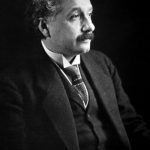Weekly Wrap Volume 122
We British are often stereotyped as being prudish and stoically reserved in all aspects of intimacy. As such, it may surprise non-natives to learn that for over four decades, one of the most popular newspapers in the entire country had a large picture of a topless woman on the third page for no other reason than that she was an attractive lady showing off her wobbly bits. The idea of supplementing a newspaper’s editorial content with pictures of women in various states of undress came about after Rupert Murdoch acquired and relaunched The Sun in 1969. Prior to Murdoch’s acquisition, the paper was a broadsheet aimed at, according to its original founder, the “sophisticated and superior middle class”. When the paper failed…(more)
 How They Get Teflon to Stick to Pans
How They Get Teflon to Stick to Pans
Saving us from soaking, scraping and scrubbing, Teflon has been a lifesaver (or at least a hand-saver) for home cooks for the last 50 years. Comprised of a unique polymer that actually repels nearly every other material (the only known thing a gecko’s feet can’t stick to), the processes used to get this substance to adhere so well to a pan relies on sand, heat, a vacuum and sometimes even another chemical. For the uninitiated, as noted previously, Teflon was created by accident in 1938 in Dupont’s Jackson Lab. Dr. Roy J. Plunkett had been playing around with refrigerants and compressed and froze a sample of tetrafluoroethylene which spontaneously polymerized. The waxy result of that experiment was polytetrafluoroethylene (PTFE). Inert and, for a long time…(more)
 How the Tradition of Trick or Treating Got Started
How the Tradition of Trick or Treating Got Started
The vast majority of the traditions commonly associated with Halloween today are borrowed or adapted from four different festivals, namely:
- The Roman Feralia festival, commemorating the dead
- The Roman Pomona festival, honoring the goddess of fruit and trees
- The Celtic festival Samuin, meaning “summer’s end”, (also called “Samhain”) which the bulk of Halloween traditions ultimately stem from
- The Catholic “All Soul’s Day” and “All Saints’ Day”, which was instigated around 800 by the Church to try to replace Samuin
The practice of wearing costumes or masks during this sort of end of Autumn…(more)
This Week’s YouTube Videos (Click to Subscribe)
- How Does Anti-Fog Spray Work?
- The Origin of “That’s What She Said” and the Much Older British Equivalent of the Phrase
- From Soccer Hopeful to Worlds Angriest Chef
- That Time the BBC Deleted Almost Every Episode of Doctor Who
- Dan Aykroyd’s Fascination with the Paranormal and How It Inspired Ghostbusters
- The Fascinating Reason Witches are Commonly Depicted Flying on Broomsticks
Bonus Quick Facts
- Thomas Jefferson was fluent in more languages than any other American president to date. In a letter he sent to Philadelphia publisher Joseph Delaplaine, Jefferson stated that he could read and write in six different languages: English, Spanish, French, Latin, Italian and Ancient Greek.
- According to the French Ministry of Culture, there’s at least one street in every town of France that is named after Victor Hugo.
- Love that “new car smell”? You may be smelling beaver butt secretions, which you’ve also probably at one point or another eaten. Secretions from beavers’ castor sacks located next to their anal glands have a musky/vanilla scent. This substance, called castoreum, is commonly used in various perfumes, in some cases used to create the “new car smell,” and used in many foods as “natural flavoring,” in substitute for vanilla. Non-dairy creamers are just one of many foods that commonly contain castoreum. Yum!
- A small Austrian village in the municipality of Tarsdorf has something of an odd name from an English speaking point of view. The town is F*cking, Austria (pronounced fooking). The town is thought to have been founded around the 6th century by a Bavarian nobleman by the name of Focko. The name evolved from there with various spellings until the 18th century when it became as it is today. The name essentially means “(place of) Focko’s people.”
- While many people fear flying, nobody seems to fear sleeping in a bed. Yet in 2013, according to The Aviation Safety Network, only 265 people around the world who traveled via a commercial airplane holding 14 or more passengers lost their lives because of a plane crash (out of about 31 million flights), while in the United States alone, according to the Center for Disease Control, falling out of bed accounts for about 450 deaths, 400,000 hospital admissions, and 1.8 million emergency room visits each year.
- According to the Chinese newspaper, Kwong Wah Yit Poh, a man managed to eat more than 300 free meals in the first class lounge at Xi’an Airport in Shaanxi, China. The man bought a first class ticket and kept using it every day in the VIP lounge of the airport, where it offers free drinks and food for first class ticket holders. After he finished his meal, he would just change the date of his flight in order to enjoy a free lunch every day. When he finally got caught, he just cancelled his ticket and received a full refund.
- While most people connect historical African slave trade almost exclusively with the United States, the truth is that the U.S. was “only” third in this sad statistic, importing about 400,000 slaves. Jamaica rang in at over a million and nearly 5 million went to Brazil.
Other Interesting Stuff
 The Theft and Half Century Journey of Einstein’s Brain
The Theft and Half Century Journey of Einstein’s Brain
On April 17, 1955, the greatest scientist of his generation checked himself into Princeton Hospital due to chest pains. By early the next morning, Albert Einstein had died from an abdominal aortic aneurysm – the rupture of the aorta, the heart vessel that’s the body’s main supplier of blood. While word was still getting out that the great Dr. Einstein had passed away at the age of 76, something rather disturbing was happening at the hospital, if not downright nefarious. Einstein’s brain, the keeper of one of the world’s greatest intellects, had been stolen. And that is just the beginning of the story. Dr. Thomas Stolz Harvey was the pathologist on call…(more)
On October 29, 1929, on what would become known as “Black Tuesday,” the stock market crashed. In one terrible day, the market lost fourteen billion dollars (about $188B today), signaling the beginning of the (roughly) ten-year-long Great Depression, with most of the last vestiges of the downturn only ceasing around 1939 due to the onset of World War II. Just as the effects of an economic downturn spread from Wall Street to the farmers of rural America, another major problem arose: a severe drought struck middle America. Starting in 1931, the drought, coupled with poor farming practices, caused hellacious dust storms to envelope much of America’s midwest. Through much of the 1930s, these storms ravaged land, crops, and topsoil, making it impossible…(more)
Making Out. Snogging. Canoodling. Kissing. An activity that is teetering on the edge of gross when viewed objectively, but one that most everyone enjoys in practice. But why do we kiss? What compels us to attach our lips to the lips of another human being? Or push the envelope even further and do the microbial tongue tango? Kissing has been a noteworthy activity throughout history. The earliest literate culture, the Sumer, described both standard and tongue kissing in their poetry. The couple thousand years old Indian Kama Sutra, the ancient guide to getting-it-on, devotes an entire chapter exclusively to various modes of creative lip-locking. Herodotus mentioned kissing among the Persians, who greeted those of equal status with a non-romantic kiss on the mouth, but those of lower rank with a kiss on the cheek. He also pointed out since the Greeks ate cow meat…(more)
In 1993, concerned about the steady decline of milk consumption over recent years, the newly created nonprofit California Milk Processor Board approached the advertising agency of Goodby, Silverstein & Partners, seeking fresh ideas to get America excited about drinking their product. The agency found the request quite a challenge, since, in the words of Jeff Goodby: “We have all tried it. Most of already own some.. . . Milk is not new. It is not improved . . . . There is very little to say about it.” And so, despite years of experience, the Mad Men and Women of Goodby, Silverstein & Partners were at a loss for where to start when, during a focus group, one woman noted that: “The only time I even think about milk is when I run out of it,” which led Goodby to write…(more)
 A Mime in the French Resistance
A Mime in the French Resistance
A fixture in entertainment throughout the second half of the 20th century, a commander of the Ordre des Arts et des Lettres, and Officer of the Legion d’honneur, the recipient of the Médaille Vermeil de la Ville de Paris, Emmy Award winner, and a grand officer of the Ordre national du Mérite, among numerous other awards and honors, Marcel Marceau is widely considered to be the greatest mime of the modern era. Yet, despite his fame as a performer, Marceau’s greatest contribution to society came years earlier during World War II when he worked with the French Resistance. Marceau was born Marcel Mangel on March 22, 1923 to a Jewish family in Strasbourg, France, near the border with Germany. When he was only five years old, he saw his first Charlie Chaplin film, a moment that…(more)
| Share the Knowledge! |
|










